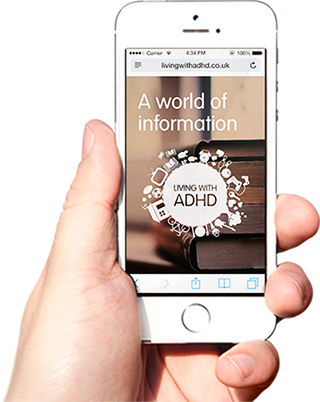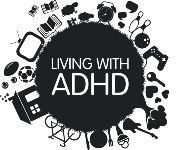The role of school staff
The role of school staff
The role of teachers
Teachers have a key role to play in the diagnosis, monitoring and support of children with ADHD.
Recognition and referral
The teacher's knowledge about how a child behaves, performs and interacts with others at school is key to the diagnosis of ADHD. For a diagnosis to be made, the child's symptoms must be present in settings other than just at home, so the teacher's observations and experiences of the child's behaviour are very important. The child's assessment is therefore likely to include psycho-educational assessment.
The child may be assessed to find out whether they are achieving appropriately for their age; for example, through reading and maths tests.
Contact from a child’s healthcare team
With the permission of the child's parents, the specialist team responsible for the child's care may contact the school or pre-school to find out about the child's:
- Learning style
- Speed of working
- Impulsivity
SENCO
As ADHD often represents a barrier to success at school, teachers may be the first to recognise ADHD. The first point of referral for classroom teachers is the SENCO (or nearest equivalent, in areas without SENCOs), who can then refer on to outside agencies. Clearly, if the teacher considers there is a problem with the child's behaviour, it is important to involve their parents or carers from an early stage. Click here for more about SENCOs.
Educational intervention and classroom management
Teachers can assist children with ADHD through a variety of educational intervention and classroom management strategies, as well as behaviour modification strategies. Examples of educational interventions are:
- Seating the child near the teacher but always as a regular part of the class
- Ensuring the child is seated away from distracting stimuli such as heaters, windows or air conditioners
- Surrounding the child with good role models, or 'significant others'
- Encouraging peer tutoring and co-operative learning
Specific strategies to help with attention difficulties include:
- Getting students to repeat back instructions
- Ensuring resources are available readily and in sufficient quantities
- Varying the pace of tasks and activities used in lessons
- Where possible including active as well as in-seat tasks
- Using prompt sheets and step by step instructions
- Rewarding task completion immediately if possible
- Reducing extraneous background noises
- Ensuring students are given clear, concise instructions
- Teaching the child strategies to improve their listening skills
- Encouraging students to take notes
- Using visual cues
To help with increased activity levels:
- Allow students to fiddle with an agreed object, e.g. a stress ball
- Anticipate potential problems and have planned responses
- Emphasise the difference between 'in class' and 'out of class' modes
- Allow the child a calming-down period before coming into class
- Encourage a calm atmosphere in class
- Give short breaks between assignments
- Plan ahead for transition times
- Use alternative technology e.g. computer, dictaphone
- Set a variety of tasks and activities: where possible include 'hands on' activities
- Give the whole class stretching exercises midway through lessons
- Seek advice from an occupational therapist
- Plan time out facility; encourage students to realise when this is necessary
- Use students for 'jobs' which require activity
Specific strategies to deal with organisational difficulties include:
- Liaise with parent/carer regarding consistent strategies to help develop routines
- Have spare materials in classes that students can borrow/'rent'
- Instigate a targeted incentive system
- Colour code and/or use symbols in the timetable - ensure students have several copies and that spare copies are available at a specific location
- Check lists of equipment required for specific lessons
Specific strategies to deal with impulsivity include:
- Paired working and/or student support
- Behaviour management programme
- Time targets - use a timer
Introduce rewards for good behaviour
Teachers can encourage good behaviour by providing immediate and consistent feedback, and by introducing rewards and consequences systems. Incentive schemes can make use of:
- Star charts or stickers
- Merits or points systems
- Goal cards
- 'Golden time' or choice of activity time
For older students, other options can be considered, including:
- Negotiated behaviour contracts
- Alternative curriculum choices
- Work-study programmes
Ideal day-to-day classroom practice
Counselling, mentoring and coaching can also help children with ADHD. Ideal day-to-day classroom practice for managing ADHD includes:
- Having a thorough knowledge of ADHD
- Being firm and consistent about rules, but always staying calm and positive
- Running a predictable and organised classroom
- Dealing with homework in a pragmatic way
- Knowing when to back off when the student's own level of frustration begins to peak
- Speaking clearly in brief, understandable sentences
- Looking the child straight in the eye when communicating
- Providing immediate and consistent feedback regarding behaviour
- Developing a private signal system with the child to notify him/her gently when he/she is off task or acting inappropriately
- Avoiding ridicule and criticism, and keeping a sense of humour in trying circumstances.
The role of school nurses
If suitably trained, the school nurse may be involved in assessing children with suspected ADHD.
The nurse may also be responsible for storing and administering medication being taken by children with ADHD.
Rules on drugs used in ADHD treatment
Stimulant drugs used to treat ADHD are controlled under Schedule 2 of the Misuse of Drugs Act. This means that, among other things, they are subject to stringent storage regulations in all situations other than the patient's home.
- Drugs should at all times be kept in a locked receptacle and this receptacle must be kept out of general view
- The keys to the receptacle should be kept by the Head Teacher or a designated member of staff
- The parent(s) or guardian(s) of the child should remove and sign for any unused drugs from the school at the end of any term
- If any drugs remain at school at the end of a term and the parent(s) or guardian(s) fail to answer a request to remove them, the drugs should be taken to a pharmacy for safe disposal, and the pharmacist requested to sign the register. The parent(s) or guardian(s) should be notified in writing that this has occurred
The school nurse needs to be aware that:
- The dosage set by the specialist must be followed exactly
- The timing of administration is crucial to the wellbeing of the child and may require a dose to be given during the school day.
The role of SENCOs
When a child is suspected of having ADHD, has been diagnosed with ADHD, or joins the school with an existing diagnosis, the Special Educational Needs Coordinator (SENCO), or equivalent in areas without a SENCO, becomes involved.
Raise the possibility of assessment
If a school SENCO thinks that a child may have ADHD, they should raise the possibility of assessment with the parents, an educational psychologist or a school doctor. Patterns of referral and service provision vary across the country.
The Special Needs Register and Individual Education Plan
A child with ADHD will likely be placed on the School's Special Needs register, in which case the child may have a Statement of Special Educational Needs, or at least be involved in an Action Plan or Action Plan Plus programme. This will mean that the child will have an Individual Educational Plan (IEP) that will detail the level of support the child will need.
This IEP will usually be managed by the SENCO, who will co-ordinate with the Educational Psychologist and healthcare professionals regarding the targets set, and how often the child will be monitored and reviewed.
The role of educational psychologists
The educational psychologist carries out a number of assessments when ADHD is suspected. The specific methods will differ, but typically will involve the following stages designed to pinpoint ADHD and differentiate it from other conditions.
1st step - Assessment
- Cognitive abilities test - Wechsler Intelligence Scale for Children - 4th Edition (WISC-IV).
- Attainment testing - Wechsler Individual Achievement Test - 2nd Edition (WIAT-II).
- This includes measures of reading, numerical, written language and oral language attainment.
- These two assessments provide comparison of achievement and ability. This is the first step in identifying Learning Disabilities.
- Woodcock Johnson III also offers two tests of cognitive abilities and tests of achievements to assess for underachievement.
2nd step - Additional tests
- Attention deficit hyperactivity disorder (ADHD)
- Parent and teacher questionnaires - Conners' Rating Scales to obtain a Behaviour Profile
- Continuous peformance tasks - Auditory Continuous Performance Test (ACPT)
- Dyslexia (SPLD)
- Phonological Abilities Test (PAT)
- Dyspraxia (DCD)
- Wide Range Assessment of Visual Motor Abilities (WRAVMA) to test visual-motor, visual-spatial and fine motor skills
- Austistic spectrum disorders (ASD)
- Social Communication Questionnaire (SCQ)


Resources
Visit our resource centre for useful information and helpful activities for parents, teachers and teenagers living with ADHD.
